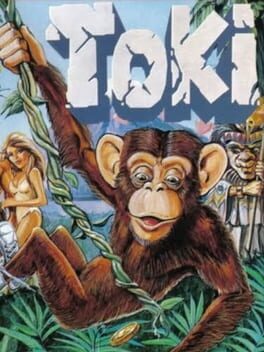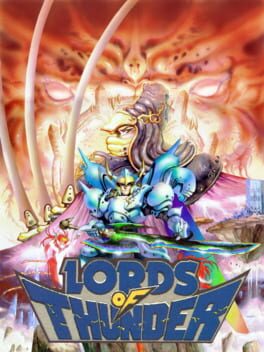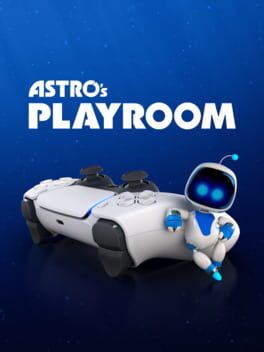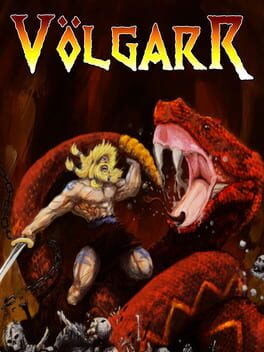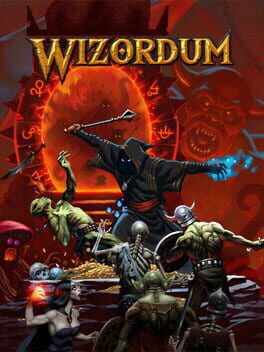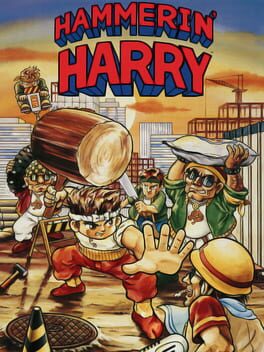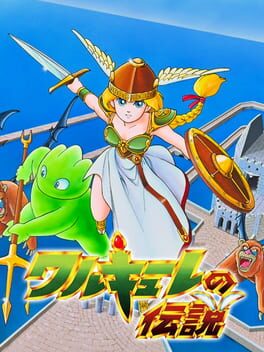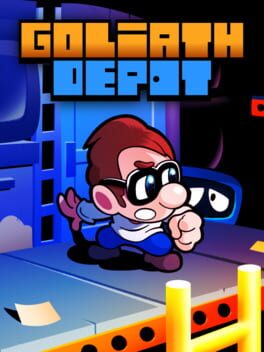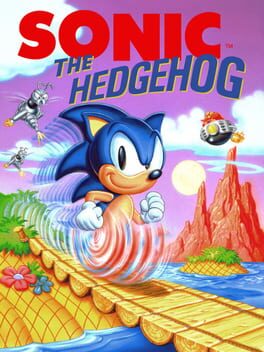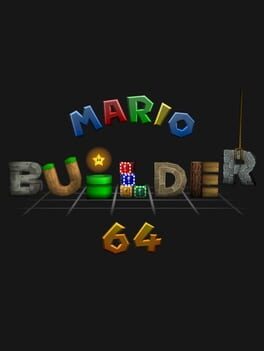evy96
Funnily enough, this wasn't one of the first genesis games I played despite the family members who loaned me my first Genny being huge Disney fans. As a matter of fact, I didn't play it until my college days in the late 2010s.
In retrospect, that's kind of a shame. Whats here is a perfectly serviceable pre Sonic platformer- maybe the best aside from Marvel Land. Sorry Alex Kidd in the Enchanted Castle- as much as I can enjoy you besides the jank, you aren't much of a step up from the 8 bit game.
The animation and music must have been show stoppers in a time before the blue blur showed up. I especially like how the gravity shifts in toy land. You can also see some of those classic sega arcade roots in the scoring system at the end of each stage- even the amount of throwing projectiles you've got left are accounted for here.
I do think the controls and hit detection could've been better though. It's kind of the same way I feel about Rayman Origins. It looks incredible, but the character you control is perhaps a little too animated and that interferes with the actual gameplay a bit. Don't expect the same kind of instantaneous response you'd get from the NES mario games here.
Still, it's a good game I wish I wouldn't have overlooked just because I wasn't a huge fan of Disney as a kid and something I'd think any sega fan ought to experience at least once in their life.
In retrospect, that's kind of a shame. Whats here is a perfectly serviceable pre Sonic platformer- maybe the best aside from Marvel Land. Sorry Alex Kidd in the Enchanted Castle- as much as I can enjoy you besides the jank, you aren't much of a step up from the 8 bit game.
The animation and music must have been show stoppers in a time before the blue blur showed up. I especially like how the gravity shifts in toy land. You can also see some of those classic sega arcade roots in the scoring system at the end of each stage- even the amount of throwing projectiles you've got left are accounted for here.
I do think the controls and hit detection could've been better though. It's kind of the same way I feel about Rayman Origins. It looks incredible, but the character you control is perhaps a little too animated and that interferes with the actual gameplay a bit. Don't expect the same kind of instantaneous response you'd get from the NES mario games here.
Still, it's a good game I wish I wouldn't have overlooked just because I wasn't a huge fan of Disney as a kid and something I'd think any sega fan ought to experience at least once in their life.
1991
Probably a hot take, but I find this game to be better than its arcade counterpart in terms of both aesthetics and gameplay. I think the cutesy/cartoony angle they took with this port is a bit better than the somewhat unsettling surreal approach taken by the arcade. This is also a home port that fully understands it is a home port, and as such, removes some of the BS quarter munching tactics.
You're now able to take a hit or two before dying, which helps tremendously. However, I think Taito may have gone a bit too far as you actually get heart containers and will be able to take up to four hits by the end of the game. They could have just capped it off at two hits and you're dead- just makes things a little too easy.
If you're a purist, though, you'll find the Famicom version to your liking as it still retains the one hit deaths.
You're now able to take a hit or two before dying, which helps tremendously. However, I think Taito may have gone a bit too far as you actually get heart containers and will be able to take up to four hits by the end of the game. They could have just capped it off at two hits and you're dead- just makes things a little too easy.
If you're a purist, though, you'll find the Famicom version to your liking as it still retains the one hit deaths.
As others have pointed out, this game is obnoxiously similar to SMB3 in terms of aesthetics- not that I think that's a bad thing at all. It's still a traditional 2D platformer, but it definitely plays quite differently.
The main gimmick here is that you can hold down the B button to rev your character up before letting go to have them zip across the screen. You're going to have to get used to this because some gaps and areas are simply impossible to get by without using this move. It's not a half bad idea and is somewhat similar to how the jetpack would be used in Rocket Knight Adventures a couple years later, but it could have been done better.
In addition, you can collect letters that will either turn you into a frog or summon this odd character that sometimes attacks bosses for you from what I remember. Nothing really important or special though.
There are a few cheap sections and a looping maze later on I didn't care for- but that's par for the course for a non Nintendo developed platformer from this time. Overall it's a decent time, but there are far better obscure platformers on the console you should check out first. Better than something like Widget, but definitely not in the same tier as Felix the Cat or Surprise at Dinosaur Peak.
Protip: Play using an English patch. The localized prototype has also been dumped and from what I recall worked perfectly fine start to finish on an emulator when I played it a couple years ago. Normally, it shouldn't matter in a game like this. But, you're rewarded with an adorably punny ending sequence that you won't want to miss if you're a fan of that kind of thing. (Like yours truly!)
The main gimmick here is that you can hold down the B button to rev your character up before letting go to have them zip across the screen. You're going to have to get used to this because some gaps and areas are simply impossible to get by without using this move. It's not a half bad idea and is somewhat similar to how the jetpack would be used in Rocket Knight Adventures a couple years later, but it could have been done better.
In addition, you can collect letters that will either turn you into a frog or summon this odd character that sometimes attacks bosses for you from what I remember. Nothing really important or special though.
There are a few cheap sections and a looping maze later on I didn't care for- but that's par for the course for a non Nintendo developed platformer from this time. Overall it's a decent time, but there are far better obscure platformers on the console you should check out first. Better than something like Widget, but definitely not in the same tier as Felix the Cat or Surprise at Dinosaur Peak.
Protip: Play using an English patch. The localized prototype has also been dumped and from what I recall worked perfectly fine start to finish on an emulator when I played it a couple years ago. Normally, it shouldn't matter in a game like this. But, you're rewarded with an adorably punny ending sequence that you won't want to miss if you're a fan of that kind of thing. (Like yours truly!)
1993
Hands down my favorite shooter to star an actual character (as opposed to a ship) that isn't Air Zonk. Hardcore fans of the genre will probably roll their eyes at some of the "euro" aspects of the game's design, such as the inclusion of a health bar and shops in between levels, but the rest of us should have no problem enjoying the game.
One particularly interesting aspect behind the game (besides its unique theming and heavy metal soundtrack) is that you're allowed to pick which order you want to take the stages on in. I also really liked the idea of a melee-based attack on top of your regular projectiles. It works similarly to how it does in Metal Slug in that you'll whip out your sword and slash enemies if they're close enough in range. Sometimes, this attack deals even more damage than just firing away, and you can even use this to cheese some of the bosses if you so desire.
The only real disappointment here is that there are no officially licensed tracks. That's not to say what is present isn't amazing, because it is and suits the game really well. But, I am saying it would have been really cool to have some Metallica or Iron Maiden tracks in the western localization considering this was a CD-based game and (at the time) there was a big push to show off what the medium could do.
One particularly interesting aspect behind the game (besides its unique theming and heavy metal soundtrack) is that you're allowed to pick which order you want to take the stages on in. I also really liked the idea of a melee-based attack on top of your regular projectiles. It works similarly to how it does in Metal Slug in that you'll whip out your sword and slash enemies if they're close enough in range. Sometimes, this attack deals even more damage than just firing away, and you can even use this to cheese some of the bosses if you so desire.
The only real disappointment here is that there are no officially licensed tracks. That's not to say what is present isn't amazing, because it is and suits the game really well. But, I am saying it would have been really cool to have some Metallica or Iron Maiden tracks in the western localization considering this was a CD-based game and (at the time) there was a big push to show off what the medium could do.
2020
It still hurts that this was merely an extended tech demo, but I couldn't have picked a better way to kill time as I waited for Ratchet and Clank:Rift Apart to install. It's insanely charming, full of throwbacks without ever feeling like it was pandering and features a ton of unique ways to use the controller. I suppose it also helps that I was really invested in the little guy since I basically bought a PS VR set just to play Astro Bot Rescue Mission on the PS4.
Can't tell you how excited I am to play the upcoming game in this series- really. I've been wanting a full-fledged non VR game set in this universe for a while now.
Can't tell you how excited I am to play the upcoming game in this series- really. I've been wanting a full-fledged non VR game set in this universe for a while now.
2013
The marketing is pretty pretentious ("huhr duhr remember when vidya was HARD?"...failing to realize that not every game made before 1998 was an exercise in frustration) and there are simply better games that accomplish what it set out to do.
Cursed Castilla came out a year prior, actually looked like an arcade or Genesis game and had far better level design based around strict jump arcs and the need to think one step ahead since you didn't have the free-flowing movement of something like Super Mario. If you need a more modern example, Curse of the Moon went for the same thing with great results. Neither game needed to tell you it was "so hard" or "so retro", either.
Seems like this has its fans though. To be fair, it did release before the whole retro revival really blew up...but it just didn't feel any better to play now than it did upon release for me.
Cursed Castilla came out a year prior, actually looked like an arcade or Genesis game and had far better level design based around strict jump arcs and the need to think one step ahead since you didn't have the free-flowing movement of something like Super Mario. If you need a more modern example, Curse of the Moon went for the same thing with great results. Neither game needed to tell you it was "so hard" or "so retro", either.
Seems like this has its fans though. To be fair, it did release before the whole retro revival really blew up...but it just didn't feel any better to play now than it did upon release for me.
2023
I really want to like this game as I like the bright, cartoony art style that we just don't see often in the genre. I can also appreciate that it's trying to be more of a pre-Doom FPS, which again, isn't happening a lot in the indie space. Outside of Project Warlock, I'm failing to think of any.
That being said, I feel like Wizordum needs a lot of work before the early access period is up. For one thing, the maps are far bigger than they really need to be. Project Warlock worked as a sort of Wolf3D throwback because most of the levels were short and to the point. It just feels bloated as others have said on here.
The worst problem, however, is just how often monsters come out of nowhere and get these ghetto shots on you from behind. Yes, this kind of thing could happen in the classics, but it was never anywhere near as obnoxious as it is from stage 4 onward in this game.
Last, but not least, I ran into a lot of performance problems at least on my PC. The game absolutely chugged on map 4 and even after fiddling with some of the settings it still continued to drop frames in the most critical of moments (such as fending off a wave of skeleton warriors).
Hopefully these issues get fixed later- as mentioned the game is in early access and I probably would have refunded if it weren't for the fact I got it during a sale. For the rest of you...there's just far better games in this genre worth getting in the middle of this 90s FPS boom.
That being said, I feel like Wizordum needs a lot of work before the early access period is up. For one thing, the maps are far bigger than they really need to be. Project Warlock worked as a sort of Wolf3D throwback because most of the levels were short and to the point. It just feels bloated as others have said on here.
The worst problem, however, is just how often monsters come out of nowhere and get these ghetto shots on you from behind. Yes, this kind of thing could happen in the classics, but it was never anywhere near as obnoxious as it is from stage 4 onward in this game.
Last, but not least, I ran into a lot of performance problems at least on my PC. The game absolutely chugged on map 4 and even after fiddling with some of the settings it still continued to drop frames in the most critical of moments (such as fending off a wave of skeleton warriors).
Hopefully these issues get fixed later- as mentioned the game is in early access and I probably would have refunded if it weren't for the fact I got it during a sale. For the rest of you...there's just far better games in this genre worth getting in the middle of this 90s FPS boom.
1990
A short and sweet linear sidescroller. Controls can be a bit touchy, but the game is also rather easy thanks to unlimited continues. It's something that, once mastered, can easily be clocked in under 20 minutes although there is a second quest after you watch the credits roll that I'm sure most didn't know about.
It's a more linear take on the Legend of Zelda with similar combat and wonky overhead platforming. It's not perfect, but definitely has its charm and is fully worth the hour or take it'll take to complete. Even with the dodgy collision detection (especially with the platforming), the game is rather easy. I kind of wish it had some kind of second quest.
2023
The game plays like a cross between Mappy and the original Mario Bros and sees the player taking on 50 screens of single screen platforming action with some very light puzzle elements sprinkled in towards the back half.
While serviceable, I don't feel like it has quite the level of polish found in other games Flynn's Arcade has published (which includes the phenomenal Galacticon and Donut Dodo). For one thing, the overall presentation is kind of generic compared to the adherence to detail found in the aforementioned games. Goliath Depot has more of that mobile "so retro" aesthetic and some of the sound effects (which I do think are an important and underlooked aspect when it comes to neo-retro games) definitely had to come from some kind of royalty free library.
To be fair, the game does try to provide more replayability than some of the publisher's other games. There are a ton of in-game achievements to unlock as well as hard mode variants of each of the four worlds. There is also an arcade mode that should take you about 30 minutes to complete and has you playing all the stages back to back- but this is curiously locked behind beating the main game once. Last but not least, there is a randomizer mode for those into that sort of thing.
I think it's absolutely worth playing on account of its low price, but fans of single screen arcade games would do well to check out the aforementioned games first as I feel they better stick with tradition and are around the same pricepoint.
While serviceable, I don't feel like it has quite the level of polish found in other games Flynn's Arcade has published (which includes the phenomenal Galacticon and Donut Dodo). For one thing, the overall presentation is kind of generic compared to the adherence to detail found in the aforementioned games. Goliath Depot has more of that mobile "so retro" aesthetic and some of the sound effects (which I do think are an important and underlooked aspect when it comes to neo-retro games) definitely had to come from some kind of royalty free library.
To be fair, the game does try to provide more replayability than some of the publisher's other games. There are a ton of in-game achievements to unlock as well as hard mode variants of each of the four worlds. There is also an arcade mode that should take you about 30 minutes to complete and has you playing all the stages back to back- but this is curiously locked behind beating the main game once. Last but not least, there is a randomizer mode for those into that sort of thing.
I think it's absolutely worth playing on account of its low price, but fans of single screen arcade games would do well to check out the aforementioned games first as I feel they better stick with tradition and are around the same pricepoint.
1995
I got this game around Christmas of 2003 when I was 7 years old and just discovering sega's back catalog of games. I'd already played ristar on the Genesis and adored it to no end. I even remember an older cousin and I popping in the boss rush code from gamefaqs printout I had prior to even having the Genesis game and him just annihilating everything up to kaiser greedy without much experience with the game otherwise. That's how special the game is to me, lol.
As for this 8 bit version, it follows the same philosophy as Sonic 1 8 bit in that it has the same general structure but a handful of different mechanics and levels. Ristar GG features an exclusive pirate ship stage and two exclusive bosses. The snow stages also revolve around picking up bombs and hauling ass to various checkpoints before they explode....not to mention this weird time rabbit boss that is able to freeze time and bounce about while you're stunned.
What makes this version particularly impressive is how much it was able to keep in tact from the 16 bit version compared Sonic's GG outings. Swinging poles were pretty much Ristar's equivalent of the loop-de-loops of Sonic, and they weren't sacrificed in this port. There's plenty of opportunities to swing about and launch yourself at high speeds despite the limited hardware- even in the aforementioned exclusive stage.
Again, I can't say in good spirit that it's the better game over its 16 bit counterpart, but it's still worth a run if you enjoy the source material.
As for this 8 bit version, it follows the same philosophy as Sonic 1 8 bit in that it has the same general structure but a handful of different mechanics and levels. Ristar GG features an exclusive pirate ship stage and two exclusive bosses. The snow stages also revolve around picking up bombs and hauling ass to various checkpoints before they explode....not to mention this weird time rabbit boss that is able to freeze time and bounce about while you're stunned.
What makes this version particularly impressive is how much it was able to keep in tact from the 16 bit version compared Sonic's GG outings. Swinging poles were pretty much Ristar's equivalent of the loop-de-loops of Sonic, and they weren't sacrificed in this port. There's plenty of opportunities to swing about and launch yourself at high speeds despite the limited hardware- even in the aforementioned exclusive stage.
Again, I can't say in good spirit that it's the better game over its 16 bit counterpart, but it's still worth a run if you enjoy the source material.
1991
The master system truly was this odd but wonderful system for me as a child. I was lucky enough to get one at a yard sale in the summer of 2003 when I was 7 years old and at the peak of my sonic obsession. Sadly, the lot we got did not include this game but it did include a lot of other games such as Alex kidd and Ghostbusters.
I didn't get to play this until I unlocked the gamegear version on sonic adventure dx around the same age. At that time, I'm pretty sure I got to the jungle zone and gave up at the boss.
As an adult, I've probably finished this version about a dozen times and still enjoy coming back to it. Design wise, I always liked how the emeralds were found within the levels instead of an awkward special stage that feels more like a tech demo than anything (a recurring theme with the mainline genesis installments imo). I also like its arcade approach to scoring...it's really nice to hear that counter ticking down at the end when you manage to finish the game with all the emeralds and 20+ extra lives remaining.
Would I say it's better than the Genesis game? Not really. It suffers a lot due to the slowdown in Labyrinth zone. So much so that I'm such my everdrive didn't just snap in half. Why they chose to recreate this zone in the first place kind of boggles my mind when marble zone would've been a better candidate considering the difference of pace in this version. Sonic 1 8 bit is far more platforming heavy to be sure, and marble garden would've made more sense but oh well.
As it stands, it's well worth checking out and I'd say it's my favorite master system platformer besides the original Alex Kidd.
I didn't get to play this until I unlocked the gamegear version on sonic adventure dx around the same age. At that time, I'm pretty sure I got to the jungle zone and gave up at the boss.
As an adult, I've probably finished this version about a dozen times and still enjoy coming back to it. Design wise, I always liked how the emeralds were found within the levels instead of an awkward special stage that feels more like a tech demo than anything (a recurring theme with the mainline genesis installments imo). I also like its arcade approach to scoring...it's really nice to hear that counter ticking down at the end when you manage to finish the game with all the emeralds and 20+ extra lives remaining.
Would I say it's better than the Genesis game? Not really. It suffers a lot due to the slowdown in Labyrinth zone. So much so that I'm such my everdrive didn't just snap in half. Why they chose to recreate this zone in the first place kind of boggles my mind when marble zone would've been a better candidate considering the difference of pace in this version. Sonic 1 8 bit is far more platforming heavy to be sure, and marble garden would've made more sense but oh well.
As it stands, it's well worth checking out and I'd say it's my favorite master system platformer besides the original Alex Kidd.
2024
Haven't messed with the builder portion much, but I've already played some really impressive levels such as Whomp's Graveyard. I also like how star collecting handles like it does in Odyssey- you don't get booted out of the stage at any point for collecting them. It's also a plus that you don't have to deal with slightly altered physics- that was something that always bothered me about mario maker. I just wish the process to download levels was a bit less tedious. For now, you have to go to level share square and manually download them+ drag and drop them into a virtual SD card to get them to load. (It's still worth it tho don't get me wrong!)
I have been playing a lot of Bandicoot's hacks lately after being completely amazed by SMW: The Crown Tale (well, despite the overly silly plot but that's not really an issue considering these are unofficial mario games). While not nearly as good as that one, Classic Mario World still offers a solid traditional experience with the difficulty (for the most part) being just a notch or two above the vanilla game. Secret exits were perhaps a little too easy to pick up on and the custom bosses kind of sucked (Bowser Jr especially), but it's worth looking past and is completely do-able without save states unlike a lot of SMW hacks. It also helps that the game actually saves your lives even after shutting off the console- this is something that the source material was sorely lacking and is an excellent QOL update. (Other hackers should really take notice of this for those of us who try to play on the real deal when possible!)
Played through on official hardware with a Super Everdrive X3 and did not encounter any major issues.
Played through on official hardware with a Super Everdrive X3 and did not encounter any major issues.
1991
There have been some pretty intense events in my personal life lately. The reality of it is that I have a chronic illness that doctors say will potentially take my life within the next two years. That being said, there are a handful of games I grew up with that I really wanted to make sure I revisited before the grim reaper comes knocking, and I couldn't think of a better way to start things off following this news than a Castlevania game. You do, after all, fight Death. (chuckle)
I'm still not 100 percent sure which Castlevania game I truly played first. It was either the original game on NES or this one, but either way, an impact was made on my eight year old self and I still enjoy both even if I didn't really click with the fan favorite (Dracula's Curse) or the later metroidvania installments.
Like with Doom 64, I think Super Castlevania IV sticks out to me due to its atmosphere. This game was an early SNES title and, as such, you can really tell they wanted to show off what the new hardware can do. Mist in the foreground of some scenes, the spinning and rotating chambers early on and (my personal favorite) the oversized chandeliers at the start of Dracula's castle are some nice examples.
The soundtrack isn't as tense as the NES games and could be seen as inferior to some, but I think it gets the job done well enough. The theme for the treasury is probably my favorite- it's surprisingly upbeat compared to the tone of the rest of the game's music.
Contrary to what those involved in the internet e-peen measuring wars want to claim, I also don't think the game really skimps out on challenge all that much. No matter how many times I've dealt with the medusa heads in the spinning/spike filled chamber or raced across a row of crumbling platforms with bats threatening to knock me back at every chance, there's always a sense of tension. I feel Konami wanted to introduce a more gradual difficulty curve with this game and ease the player in, which isn't a bad thing considering how well known the other Classicvanias are for being brutally hard. The "real" Castlevania difficulty really doesn't set in until you reach the cellar (Frankenstein's level), which gives most enough time to really understand the mechanics.
So many people also point out to the more organic jumping mechanics and multi-directional whip when calling this a "baby game" in some circles. Sure, the jump is a little easier to handle and you have more control over where your attacks land, but the design often accounts for it. Neither of those things are going to help out in a situation where a skeleton warrior is positioned right after a platforming section (like at the beginning of the castle). If you weren't paying attention to how he attacks, you are getting knocked back and losing a life. I think I could better understand the "too easy" argument if Konami decided to remove that age-old and incredibly punishing mechanic on top of the tweaks to the jump and whip.
My main gripe with the game has to be the length of the levels. One reason I prefer the original is that the pacing was, at least to me, just right in this regard. In the beginning of the game, it's not infrequent to go through several scenes/midboss/end of level boss before moving on to the next stage. Brevity is not always a bad thing, but again, this could have been a matter of wanting to show that the Super Nintendo could do and be more than an 8 bit game.
Still, even if it's a little drawn out, I've enjoyed replaying Super Castlevania IV a lot more than I thought I would.
I'm still not 100 percent sure which Castlevania game I truly played first. It was either the original game on NES or this one, but either way, an impact was made on my eight year old self and I still enjoy both even if I didn't really click with the fan favorite (Dracula's Curse) or the later metroidvania installments.
Like with Doom 64, I think Super Castlevania IV sticks out to me due to its atmosphere. This game was an early SNES title and, as such, you can really tell they wanted to show off what the new hardware can do. Mist in the foreground of some scenes, the spinning and rotating chambers early on and (my personal favorite) the oversized chandeliers at the start of Dracula's castle are some nice examples.
The soundtrack isn't as tense as the NES games and could be seen as inferior to some, but I think it gets the job done well enough. The theme for the treasury is probably my favorite- it's surprisingly upbeat compared to the tone of the rest of the game's music.
Contrary to what those involved in the internet e-peen measuring wars want to claim, I also don't think the game really skimps out on challenge all that much. No matter how many times I've dealt with the medusa heads in the spinning/spike filled chamber or raced across a row of crumbling platforms with bats threatening to knock me back at every chance, there's always a sense of tension. I feel Konami wanted to introduce a more gradual difficulty curve with this game and ease the player in, which isn't a bad thing considering how well known the other Classicvanias are for being brutally hard. The "real" Castlevania difficulty really doesn't set in until you reach the cellar (Frankenstein's level), which gives most enough time to really understand the mechanics.
So many people also point out to the more organic jumping mechanics and multi-directional whip when calling this a "baby game" in some circles. Sure, the jump is a little easier to handle and you have more control over where your attacks land, but the design often accounts for it. Neither of those things are going to help out in a situation where a skeleton warrior is positioned right after a platforming section (like at the beginning of the castle). If you weren't paying attention to how he attacks, you are getting knocked back and losing a life. I think I could better understand the "too easy" argument if Konami decided to remove that age-old and incredibly punishing mechanic on top of the tweaks to the jump and whip.
My main gripe with the game has to be the length of the levels. One reason I prefer the original is that the pacing was, at least to me, just right in this regard. In the beginning of the game, it's not infrequent to go through several scenes/midboss/end of level boss before moving on to the next stage. Brevity is not always a bad thing, but again, this could have been a matter of wanting to show that the Super Nintendo could do and be more than an 8 bit game.
Still, even if it's a little drawn out, I've enjoyed replaying Super Castlevania IV a lot more than I thought I would.

